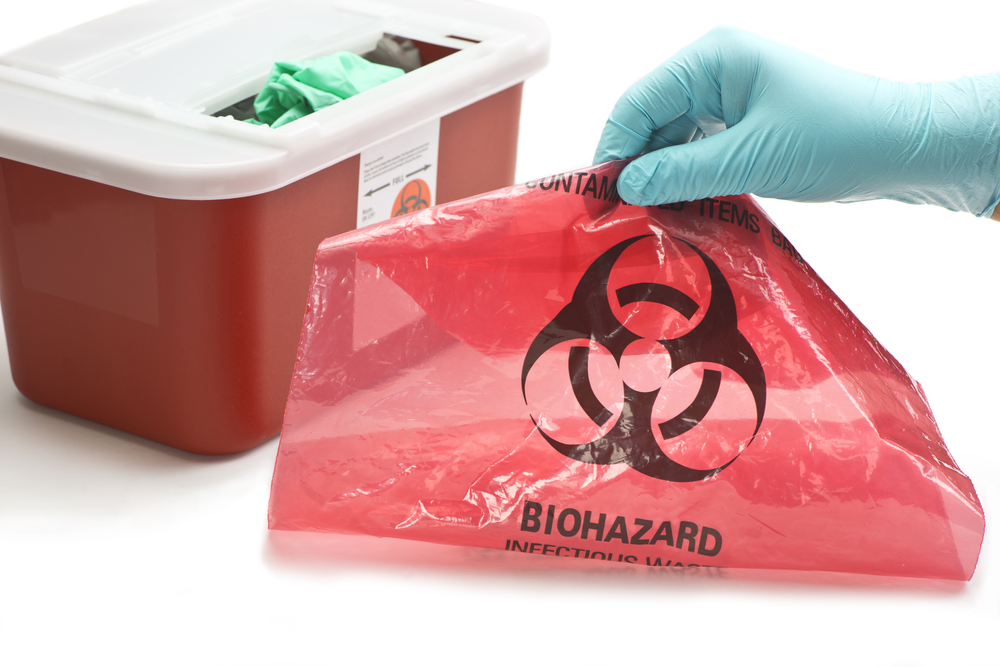What is medical waste?
Medical Waste Tracking Act of 1988 defines medical waste as “any solid waste that is generated in the diagnosis, treatment, or immunization of human beings or animals, in research or pertaining thereto, or in the production or testing of biologicals.”
Medical waste includes (and is not limited to):
- Solid waste created by treating or diagnosing people
- Product of research testing or labs of biological products
- Bodily fluid-soaked bandages
- Discarded surgical gloves and other protective equipment
- Discarded surgical instruments
- Sharps
- Swabs, cultures
- Human blood and blood products (serum, plasma, blood components)
- Hemodialysis waste of all items that were in contact with the patients’ blood
- Infectious body fluids
Where does the medical waste go?
After your medical waste boxes are picked up by one of our friendly employees, it is labeled, and loaded into the medical waste transporter. The waste is then transported to an off-site, authorized processing facility where the waste is incinerated or autoclaved.
What goes in the red bag?
Bloody gloves, plastic tubing, personal protective equipment, gauze, bandages, and/or other items saturated with blood; secure and closed disposable sharps containers; labeled trace chemotherapy and pathogen waste.
Tracking Process/Manifest System
A manifest is the official set of forms, reports, and procedures that tracks the process of the medical waste from the time it leaves the generator where it was produced, until it is properly treated in the off-site facility. The manifest system allows the generator and the government to verify that the medical waste is properly being treated and that no waste is being unaccounted for.

